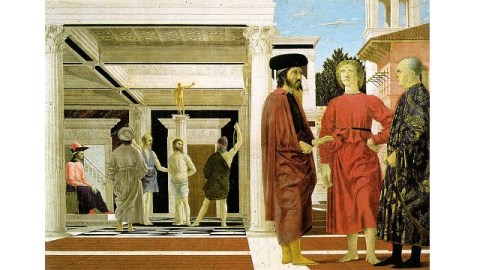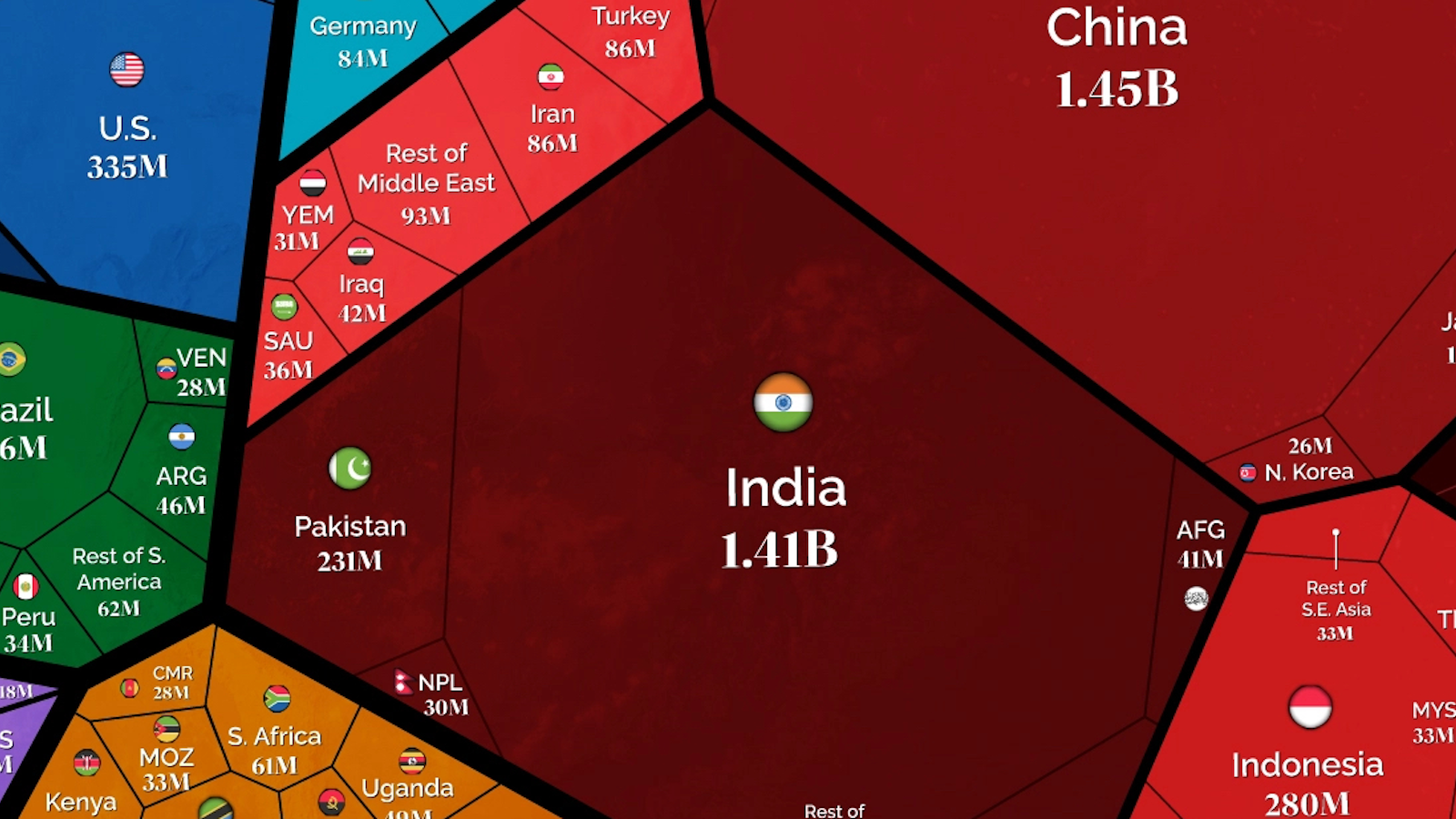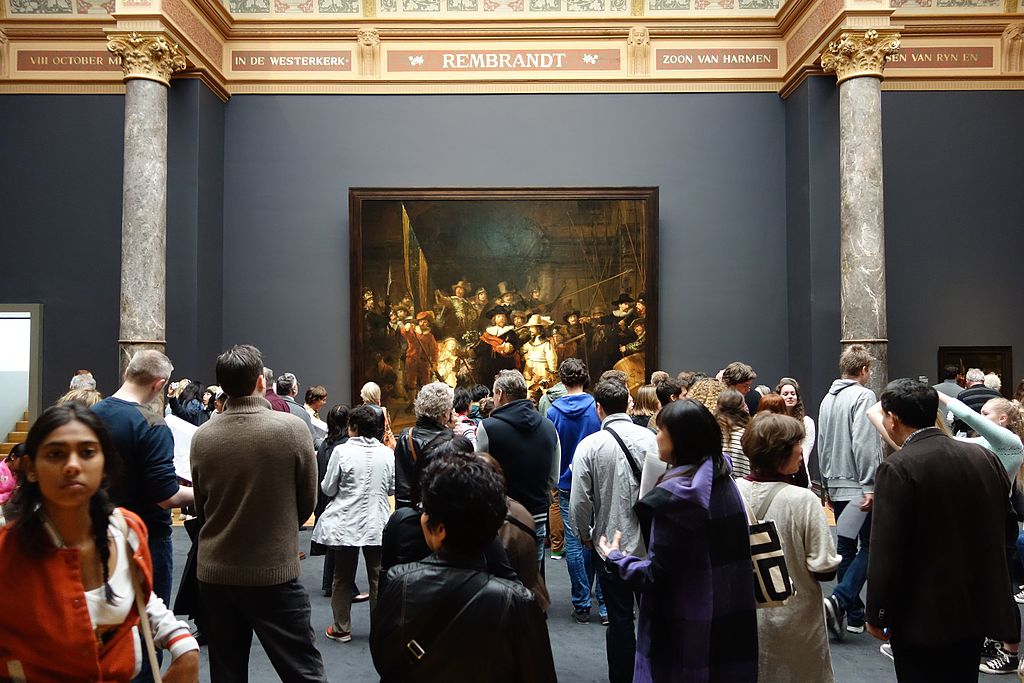Did the Italian Renaissance Begin in Baghdad?

The Italian Renaissance remains one of those amazing hinges of human history where civilization made a great leap that continues to be felt today. For German art historian Hans Belting, this “quantum leap consistent in the way perspective introduced the gaze into the picture and thus, at the same time, the human subject doing the gazing.” Works such as Piero della Francesca’s Flagellation of Christ (shown above), a masterful maze of mathematical perspective put into paint, pull the viewer in and create another world of twists and turns full of figures more human than art had offered ever before. Before this type of gazing, however, Belting argues that the artists of the Renaissance turned their gaze East—to the mathematical theories of perspective originating from Arab culture, specifically those of Alhazen, a Muslim polymath working at the turn of the first millennium to understand and improve upon the ancient mathematicians’ ideas. In Florence and Baghdad: Renaissance Art and Arab Science, Belting makes a compelling case that the vision of the Renaissance—a vision that still holds us today—began not in Florence, but in Baghdad, with important implications for both cultures.
Belting, Professor for Art History and Media Theory at the Academy for Design in Karlsruhe, Germany, and renowned historian and theorist of art ranging from medieval times to today, takes us back to the long-forgotten, even in the days of the Renaissance, work of Abū ʿAlī al-Ḥasan ibn al-Ḥasan ibn al-Haytham, known in the west more simply as Alhazen. Born in Basra in what is today’s Iraq and educated in Baghdad, Alhazen translated, studied, and even corrected the ideas of ancient mathematicians such as Euclid and Ptolemy. Alhazen later used his findings in the worlds of optics and perspective to invent (Belting argues) the camera obscura, a tool used hundreds of years later by the Renaissance artists and their artistic descendents.
Before Alhazen’s ideas could be used by Renaissance artists, however, they had to be digested by Renaissance math and science. First Roger Bacon and later Galileo, Johannes Kepler, and others rediscovered Alhazen’s ideas about perspective in translation from the original Arabic. Giotto began to use a crude form of perspective in the earliest days of the Renaissance that was more observation and intuition than science and mathematics. Filippo Brunelleschi and Lorenzo Ghiberti helped translate mathematical perspective into architecture and sculpture, but it took a later generation, perhaps exemplified best by Piero della Francesca, himself trained as a painter and a mathematician, to make mathematical perspective generate whole worlds in paint to gaze upon.
If the Renaissance took Alhazen’s ideas and created a revolution in seeing, then why didn’t Alhazen’s own Arabic culture do the same thing, hundreds of years before? Belting answers that question with a masterful analysis of the differences between the aniconic world of Islam and the icon-laden world of Christianity. For Muslims, Belting explains, to “counterfeit life” with realistic painting would make “both those who produce them and those who own them guilty of the sin of forging God’s creation, a form of blasphemy.” To portray three-dimensional space visually would be to play God, to create your own world. Hence, Islamic art sticks to two-dimensions and abstract, geometric designs or designs based on vegetation, which lacks the “breath” of life inspired by the Creator. To take mathematical perspective and make realistic pictures was inconceivable to Alhazen or other Muslims. For Westerners, however, keen on more human-centered art, depicting the world in art as closely as possible as it did to their own eyes seemed not playing God, but rather a way of getting closer to God. “The new cult of the eye reaches a peak in the writings of Leonardo da Vinci,” Belting writes. The eye “is an excellent thing, superior to all others created by God!” Leonardo proclaimed. In the West, few (most notably Nicholas of Cusa) argued otherwise.
Reproducing the complexity of Belting’s argument here seems like “playing God,” too, in capturing the majesty of his examples and endless connections (all wonderfully translated from the original German by Deborah Lucas Schneider). The combination of illustrations and verbal explanations on the nature of Islamic aniconism surpasses any previous discussion I’ve read, making the sometimes daunting trek through the forest of soaring ideas well worth the trip once you’ve reached the clearing of Belting’s payoff. The real strength of Florence and Baghdad is how Belting puts those two worlds on equal footing—side by side in coming to grips with the same idea in a way determined by their culture. In first warning himself of the dangers of Eurocentrism and colonialism whenever you talk of “influence,” Belting warns us of similar mistakes. “Linear perspective is not universal but rather tied to a particular culture,” Belting concludes, allowing for the difference of Arabic versus Christian art while also providing discursive space to analyze how and why they differ, and what that difference may mean to us.
“The globalization of perspective,” Belting believes, “supported today by Western-model television and press, has an astonishingly long history in the West’s colonization of other parts of the world… [P]rocess perspective was virtually forced on people of other cultures, who had to give up their own established modes of seeing.” From Africa to Asia to the Middle East, the Western way of seeing in perspective—individualized, human-centered perspective—eliminated all other ways of seeing and, along with them, ways of cultural being. Hans Belting’s Florence and Baghdad: Renaissance Art and Arab Science strikes the first blow for reversing the tide of that visual encroachment, or at the very least of recognizing the cultural blindness of imposed ways of seeing and how that blindness continues to keep the Middle East and West from seeing eye to eye.
[Image:Piero della Francesca. Flagellation of Christ, 1455-1460.]
[Many thanks to Harvard University Press for providing me with a review copy of Hans Belting’s Florence and Baghdad: Renaissance Art and Arab Science, translated by Deborah Lucas Schneider.]





